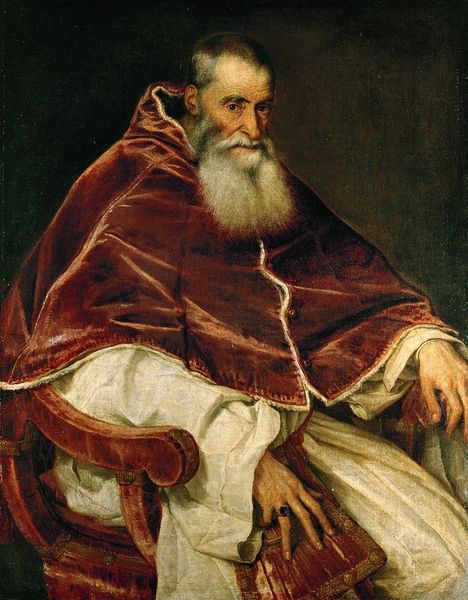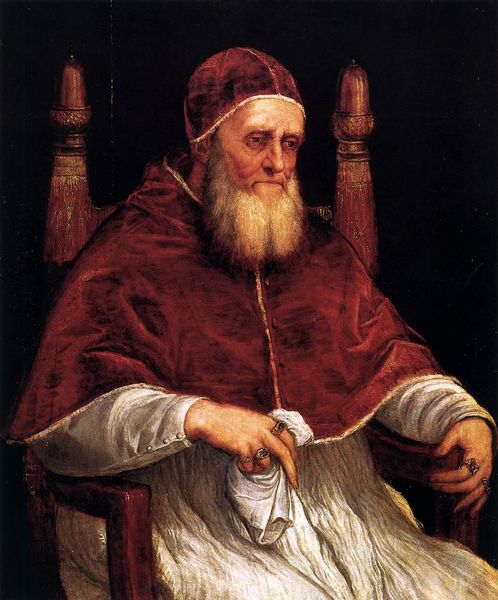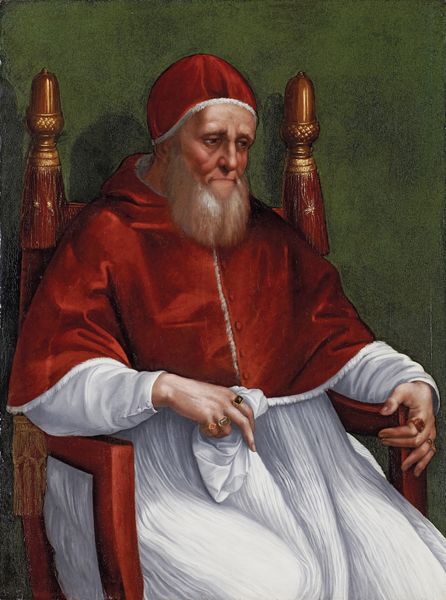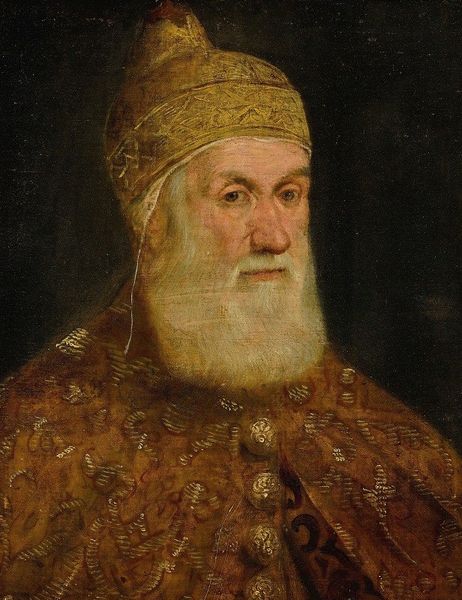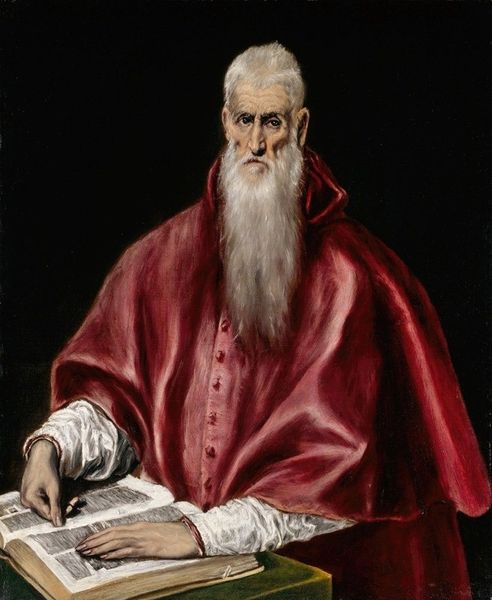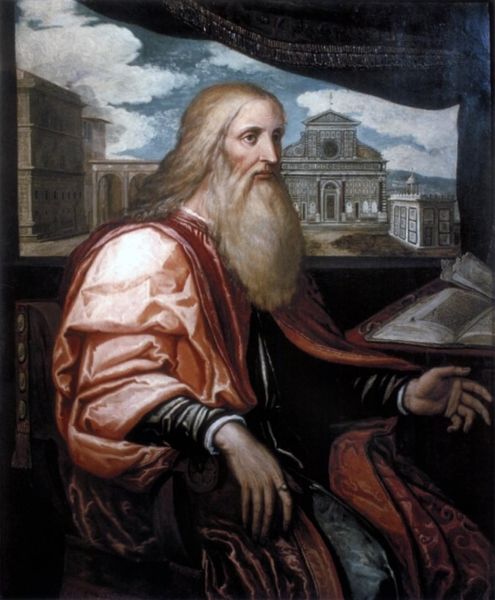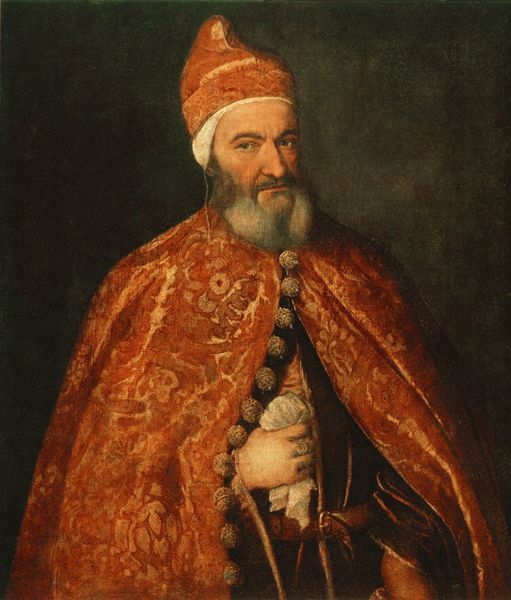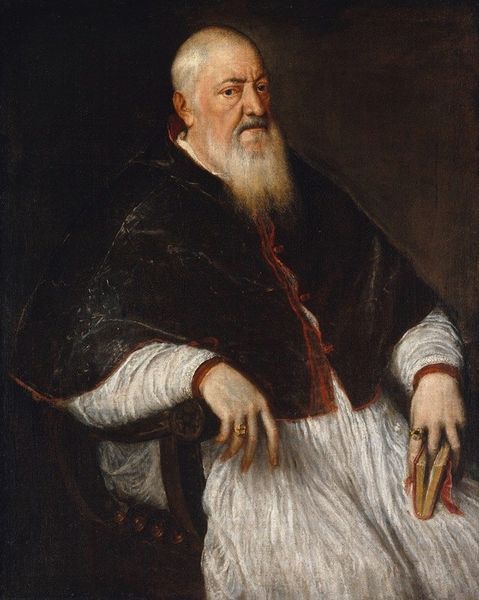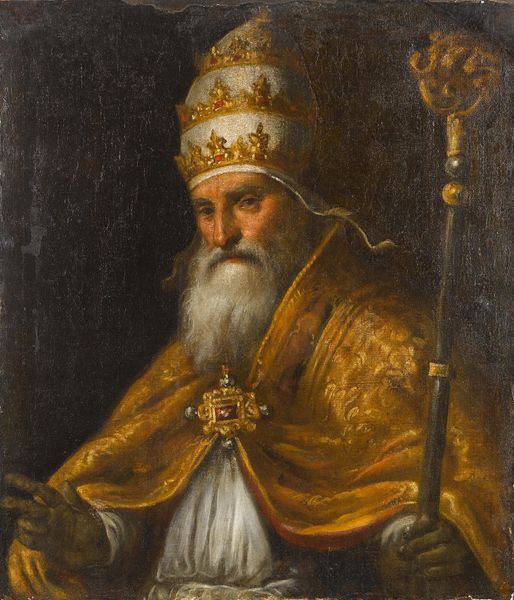
oil-paint
#
portrait
#
high-renaissance
#
oil-paint
#
oil painting
#
italian-renaissance
Copyright: Public domain
Curator: Here we have Titian’s “Portrait of Pope Paul III,” painted in 1548. It’s currently housed in the Hermitage Museum in Saint Petersburg. Editor: The color…that oppressive crimson grabs you immediately. And there’s something about the way his hands are positioned. Relaxed, but also a bit…calculating? Curator: That’s an interesting read. For me, red, especially in Renaissance portraiture, speaks to power and authority, especially with a figure such as Pope Paul. But what about the *material* red evokes for you? The velvets, dyes, perhaps a touch of vermillion? Editor: Well, thinking about the raw materials…the vermillion would’ve been extracted from cinnabar, ground meticulously. Then the weaving, the dyeing of the velvet—those processes signify intense labor. Labor controlled and signified by *him*. And of course that lovely, giant ring… Curator: That ring becomes its own kind of symbol, doesn't it? Rings in portraiture often signify connection and alliance, the power structures the papacy weaves around itself. His face—lined, weary—speaks to a lifetime spent navigating those structures. And what about the way Titian used oil paints to give it life? It looks as if he's still taking it all in and deciding who's next to take a seat at the table of power. Editor: Yes, the texture Titian coaxes from the paint is remarkable. But also consider the context. 1548. The Reformation's upheaval. How the patronage of someone like the Pope—and the consumption of art like this portrait—helped reinforce the Church's power, solidify its message through very costly material displays. Curator: Absolutely, Titian, through Paul's gaze and his own hand, is not simply capturing an individual; he’s actively constructing a specific image for posterity. Editor: An image built on pigment, canvas, labor, and a hefty dose of Papal control. It really reminds me of how fragile a power like that truly is though; so easily upset. Curator: And so visibly captured. It's quite telling to consider it today through our own cultural symbols. Editor: Power rendered in expensive paint—it makes you wonder about the cost, the cost beyond mere gold.
Comments
No comments
Be the first to comment and join the conversation on the ultimate creative platform.
